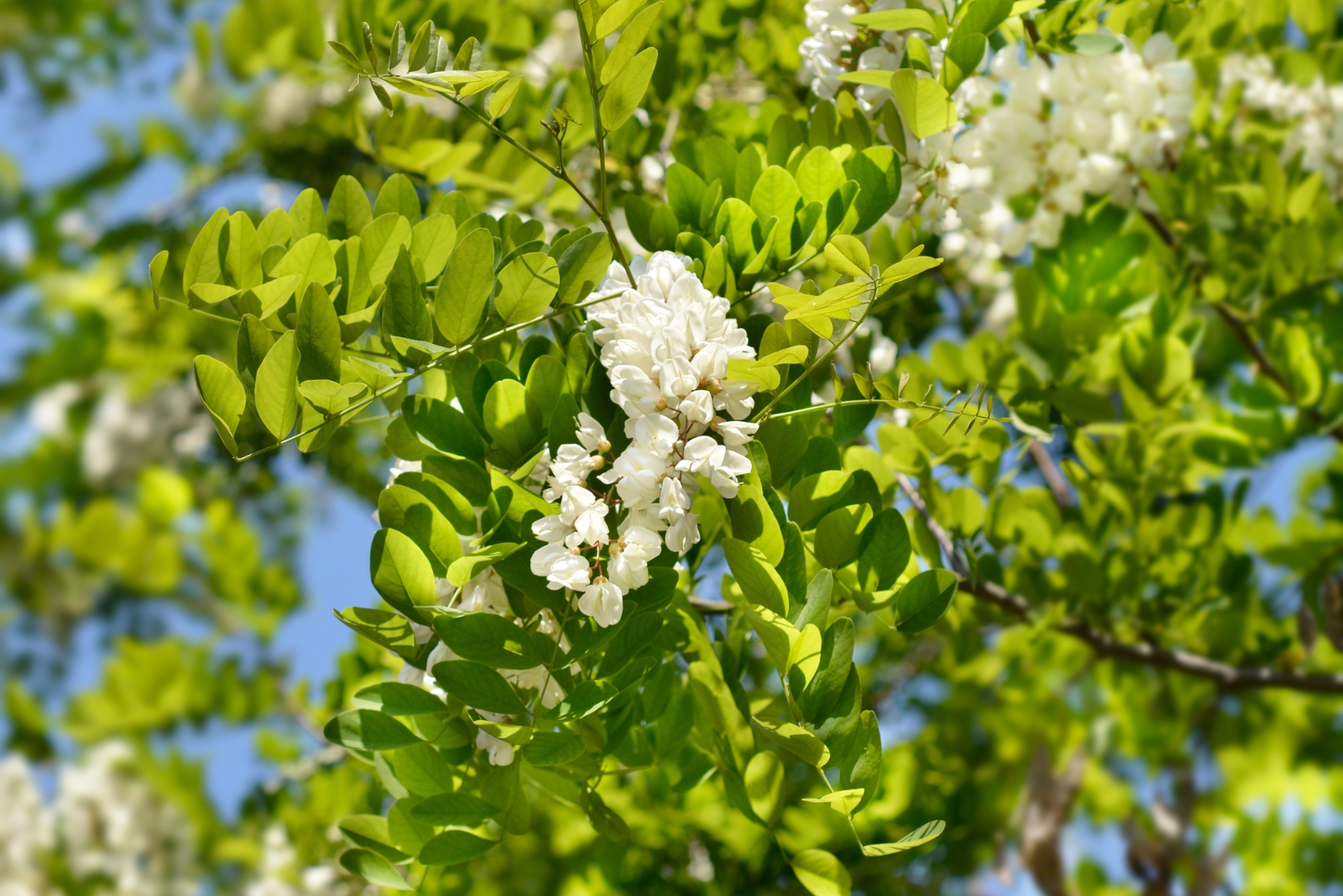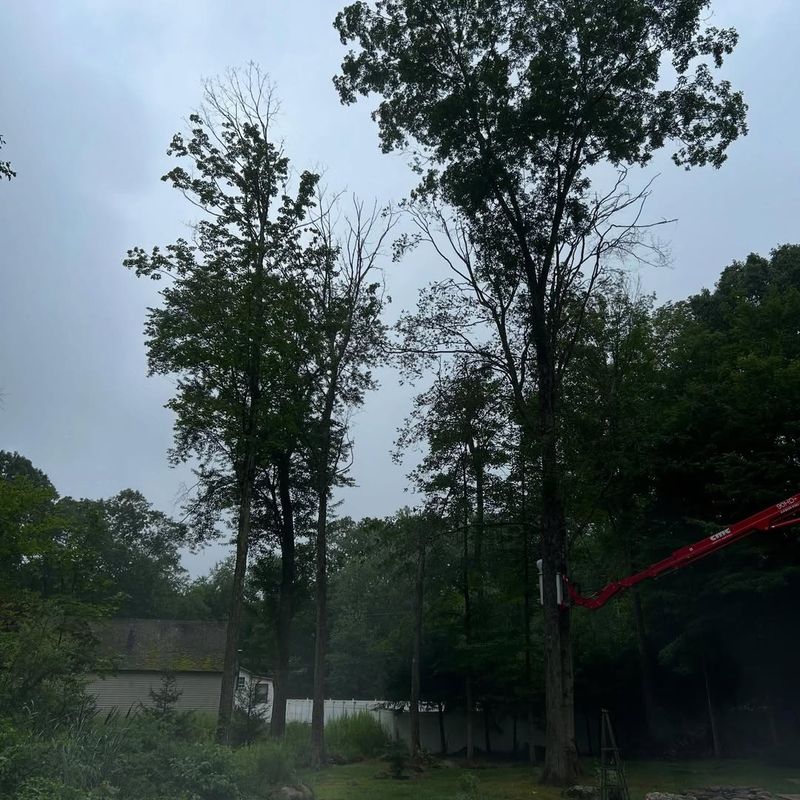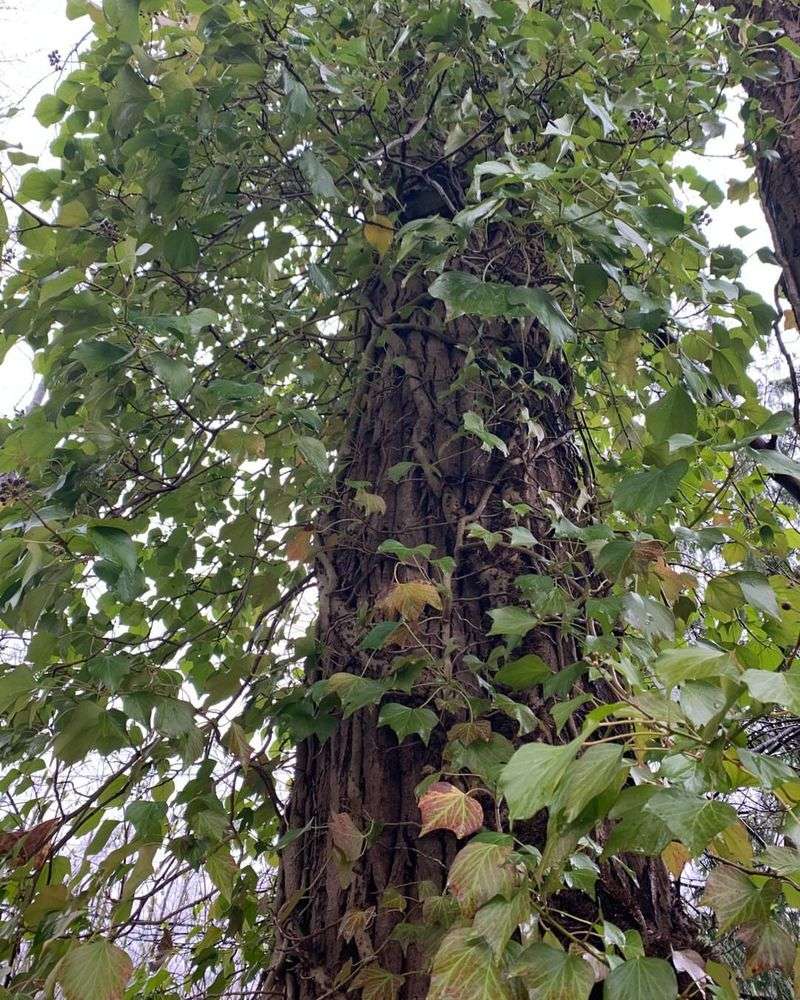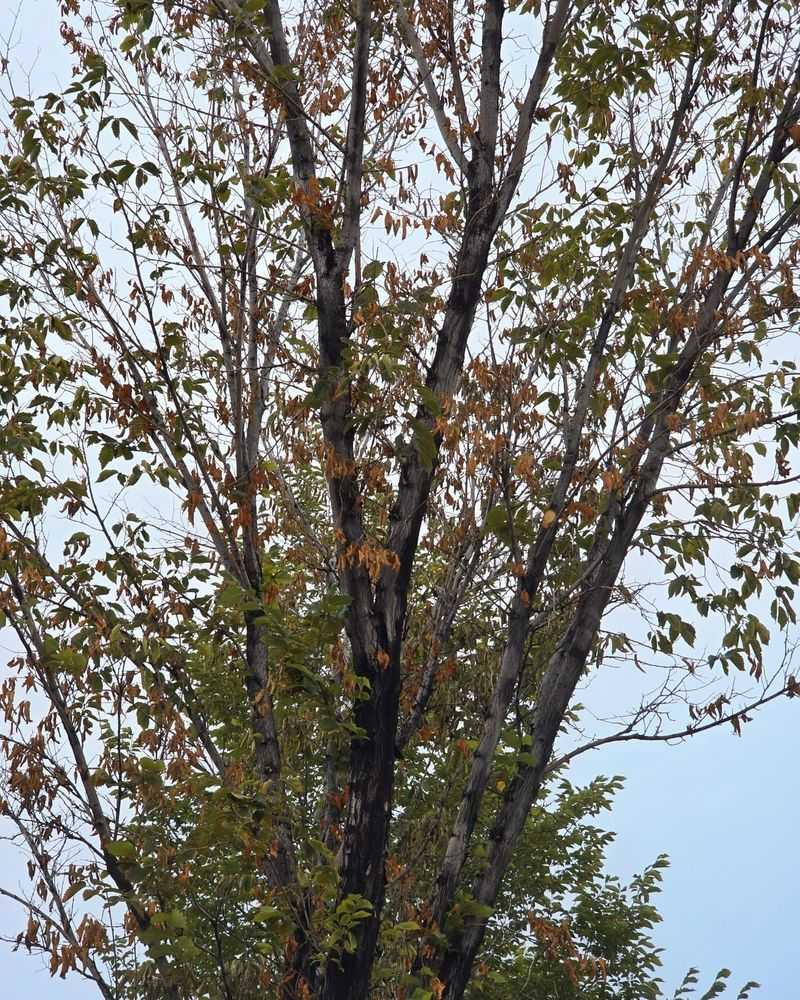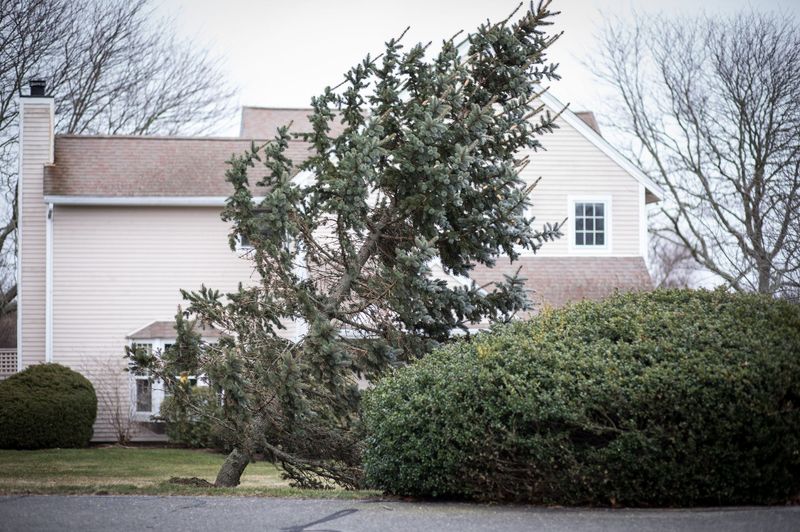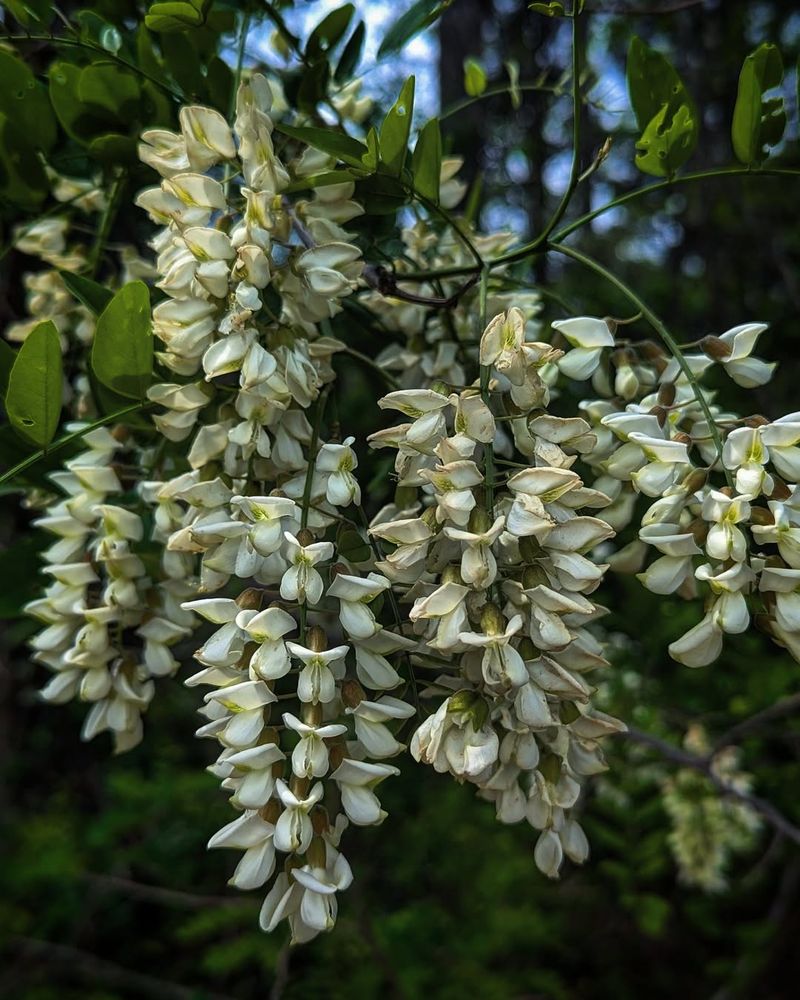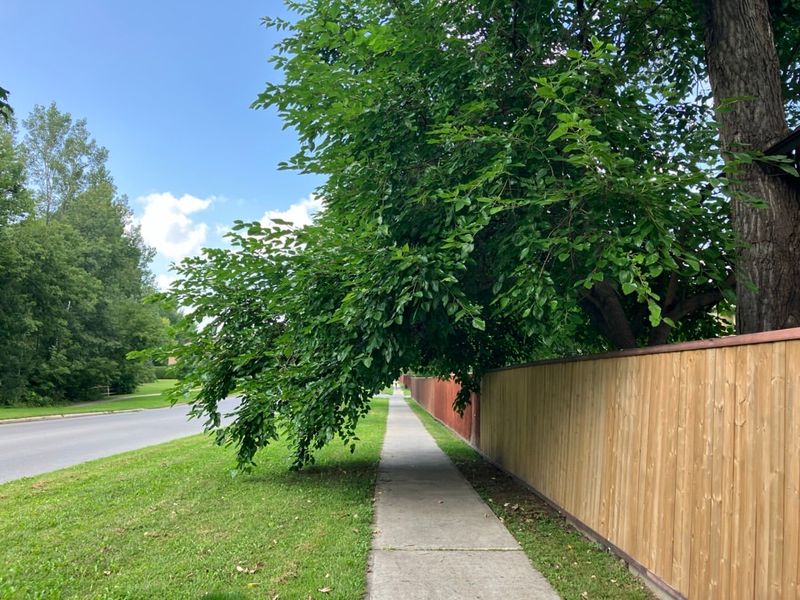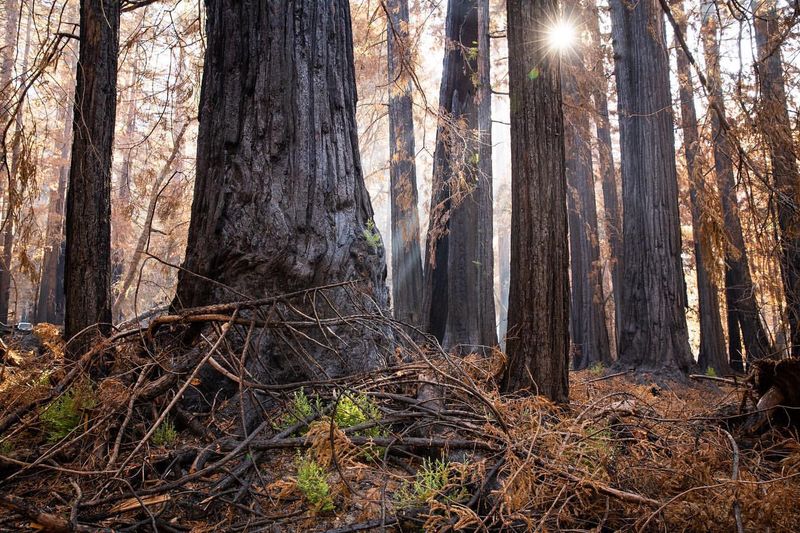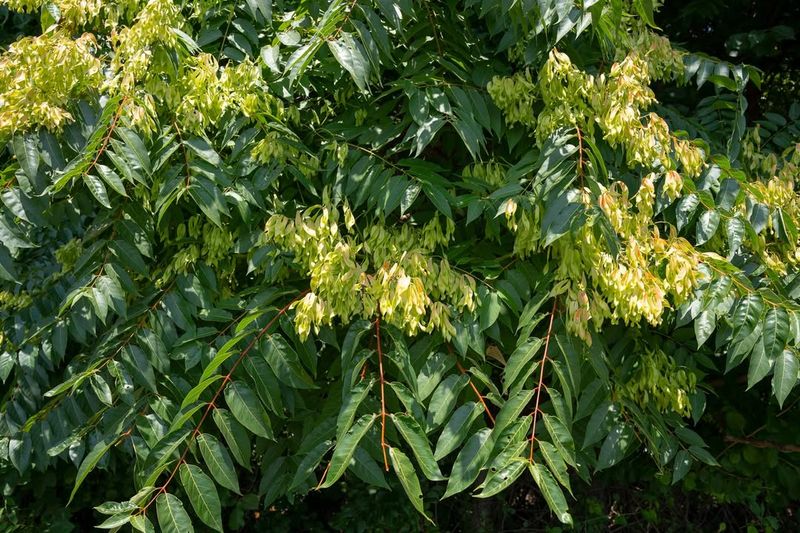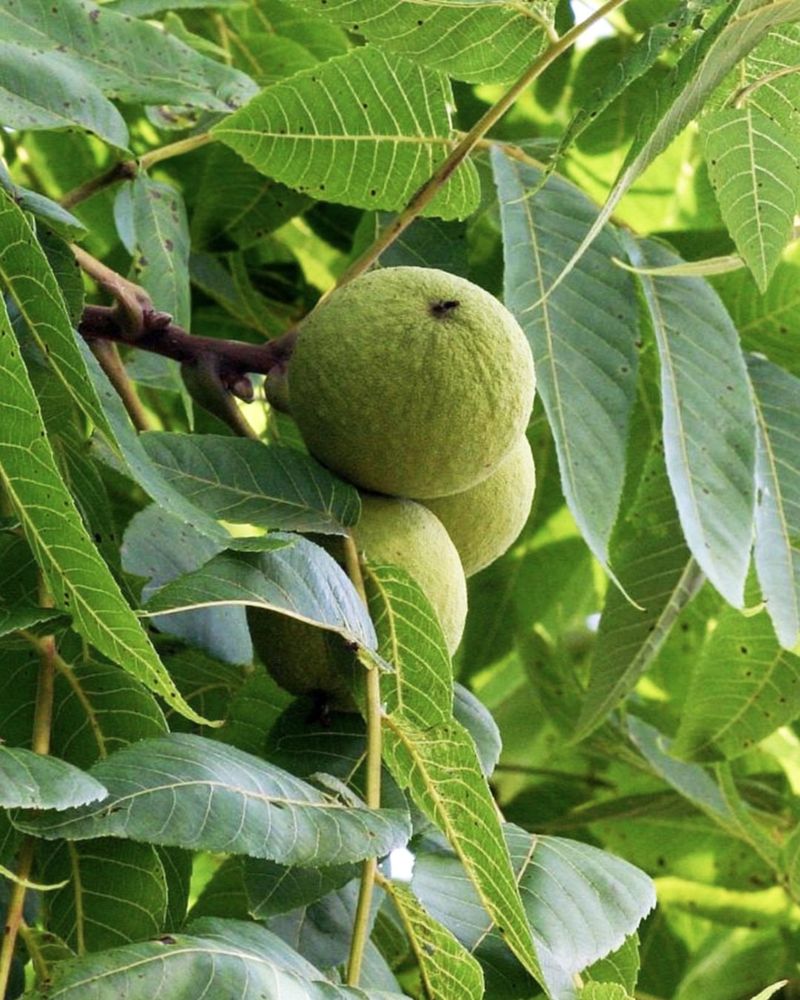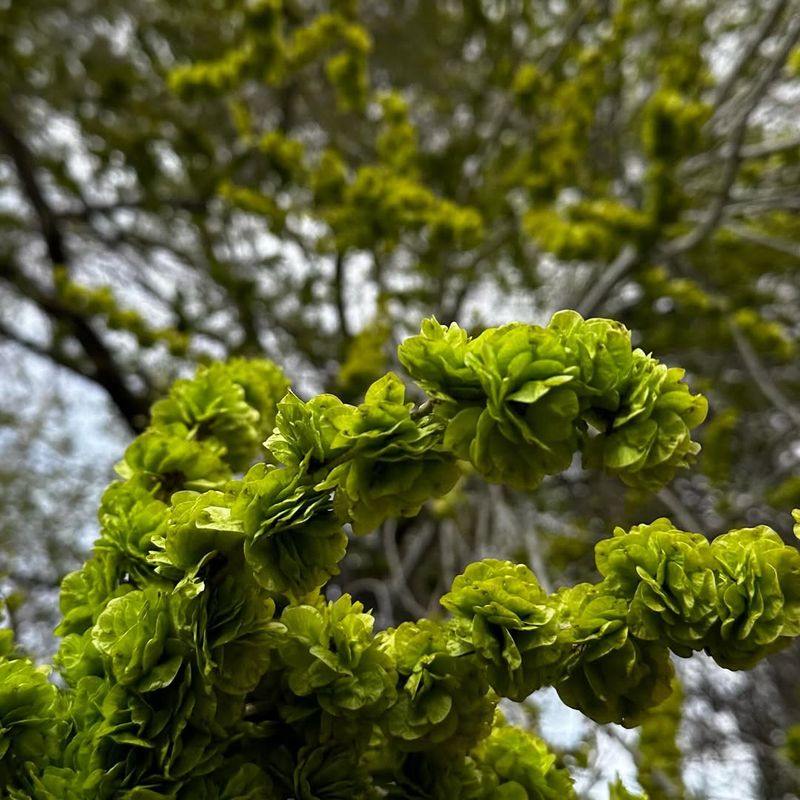Washington’s landscapes are full of towering evergreens and quiet backyard shade — but not every tree is welcome. Some species spread aggressively, damage waterways, or crowd out native forests.
Others fall under strict city and county ordinances. In the wrong place, a tree can lead to more than just yard work — it can lead to fines.
1. Dead Or Dying Trees Posing Safety Hazards
Property owners face serious consequences when dead trees remain standing near homes or power lines. Washington municipalities enforce strict safety codes requiring removal of hazardous trees that could fall and cause injury or property damage.
Branches can snap unexpectedly during storms, creating dangerous situations for neighbors and passersby. Most cities conduct regular inspections and issue violation notices when dead trees pose clear risks.
Fines typically start around three hundred dollars but increase dramatically if homeowners ignore repeated warnings from local authorities.
2. English Ivy-Covered Trees
English ivy might look charming climbing up tree trunks, but this invasive plant slowly kills its host by blocking sunlight and adding dangerous weight. Washington environmental codes classify ivy-covered trees as maintenance violations in many jurisdictions.
The vines create perfect homes for rodents and insects while weakening tree structure over time. Cities like Seattle actively enforce removal requirements because ivy spreads rapidly to natural areas.
Homeowners receive citations ranging from two hundred to five hundred dollars for allowing ivy infestations to persist unchecked.
3. Dutch Elm Disease-Infected Elms
Dutch elm disease devastates entire neighborhoods when infected trees go unreported and untreated. Washington counties mandate immediate reporting and removal of diseased elms to prevent the fungus from spreading to healthy trees nearby.
Yellowing leaves, wilting branches, and brown streaks under the bark signal infection requiring quick action. Keeping a sick elm standing violates quarantine regulations designed to protect community forests.
Penalties escalate quickly, with initial fines around four hundred dollars plus mandatory removal costs that homeowners must cover completely.
4. Leaning Trees Near Property Lines
When trees lean dramatically toward neighboring properties or public sidewalks, they become legal liabilities under Washington property codes. Homeowners must address leaning trees before they fall and cause damage or injury to others.
Insurance companies often refuse coverage for damages from trees showing obvious instability that owners ignored. Local building departments require certified arborist evaluations when neighbors file complaints about leaning trees.
Fines vary by jurisdiction but commonly reach five hundred dollars, plus potential liability for any damage the tree eventually causes to adjacent properties.
5. Black Locust Trees In Certain Districts
Black locust spreads aggressively through root systems, pushing up sidewalks and damaging underground utilities throughout Washington neighborhoods. Several municipalities have designated this species as problematic and restrict its presence on residential properties.
The trees produce sharp thorns that injure children and pets while their invasive roots crack foundations and sewer lines. Specific zoning districts prohibit black locust entirely, requiring property owners to remove existing specimens.
Violation fines typically begin at two hundred fifty dollars and increase monthly until homeowners complete removal and root barrier installation.
6. Trees Blocking Traffic Visibility
Branches hanging over streets, sidewalks, or intersections create dangerous blind spots that violate Washington traffic safety ordinances. Cities require property owners to maintain clear sight lines at corners and keep branches trimmed above roadways.
Drivers cannot see pedestrians, cyclists, or other vehicles when overgrown trees obstruct views at critical points. Municipal code enforcement officers measure clearance heights and issue citations for visibility violations.
Standard fines range from one hundred fifty to three hundred dollars, with repeat violations leading to forced trimming at the owner’s expense plus additional penalties.
7. Fire-Damaged Trees In Wildfire Zones
After wildfires sweep through Washington regions, burned trees become ticking time bombs that must be removed under emergency ordinances. Fire-weakened trees fall unpredictably and pose extreme dangers to people, structures, and firefighting efforts during future blazes.
Counties within wildfire zones enforce mandatory removal deadlines for all fire-damaged trees on private property. Charred wood attracts destructive beetles that spread to healthy forests nearby.
Homeowners face steep fines starting at six hundred dollars, plus potential criminal charges if their burned trees cause injuries or impede emergency access during subsequent fire events.
8. Norway Maple
The Norway Maple, with its expansive canopy, might seem like an ideal choice for shade. However, its invasive nature disrupts local ecosystems.
This tree’s aggressive root system can choke out native plants, reducing biodiversity. Many communities in Washington have regulations against planting or maintaining them.
If left unchecked, the Norway Maple can cause significant ecological imbalance, leading to penalties. Its prolific seed production also means it spreads swiftly, making control measures essential for homeowners.
9. Tree of Heaven
Despite its heavenly name, the Tree of Heaven is anything but divine for local flora. Known for its rapid growth, it can reach towering heights quickly.
Its invasive roots and allelopathic properties mean it often outcompetes native species by releasing chemicals into the soil. This can result in fines for unknowing homeowners.
Furthermore, its resilience makes it challenging to remove, requiring specialized intervention. In many areas, this tree is under strict control to preserve native biodiversity.
10. Black Walnut
The Black Walnut offers rich, dark wood and valuable nuts, but its drawbacks are notable. Its roots exude juglone, a chemical harmful to many plants.
In Washington, this can lead to issues with neighboring gardens and landscapes, possibly resulting in fines. The large size of mature trees also poses structural risks.
Managing this tree requires careful planning to avoid affecting surrounding vegetation. Despite its benefits, the Black Walnut demands attention due to its potential impact on local plant life.
11. Siberian Elm
The Siberian Elm might seem like an attractive option due to its fast growth, yet it presents numerous challenges. Its brittle branches are prone to breakage, creating hazards.
This tree is also notorious for its invasive tendencies, often outcompeting native trees and shrubs. Many local regulations in Washington discourage its maintenance.
Additionally, the Siberian Elm is susceptible to pests and diseases, complicating its upkeep. Homeowners may face fines if this tree is allowed to spread unchecked in their yards.

